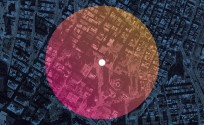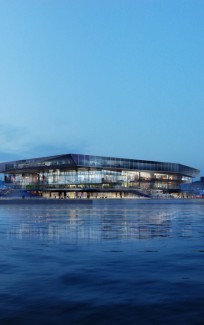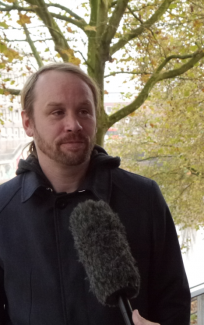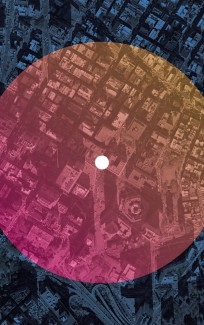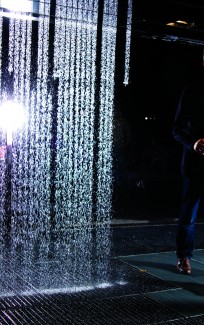A look back at the 2012 award winners
At the biennale in 2012, Media Architecture “Oscars” were handed out for the very first time. We’re taking a brief trip down memory lane to experience some of the fun, innovative, beautiful and special media architecture that was awarded two years ago – and to inspire those of you thinking about nominating a project yourself. The deadline for doing so is September 7.
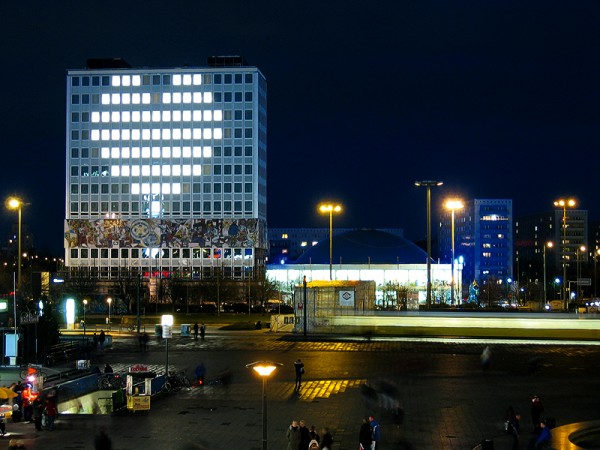
Kunsthaus BIX, Austria, won the category “animated architecture”. The Graz art building features a sort of responsive skin; a matrix of 930 flourescent lamps integrated into part of the plexiglass façade. Through the possibility to individually adjust the lamp’s brightness at an infinite variability, images, films and animations can be displayed. The BIX installation thus is highly integrated into the architecture itself; it seems that it’s the entire building radiating messages.
Galleria CenterCity, South Korea, won the category “money architecture”. It creates an optical illusion: The façades feature two layers of aluminum profiles on top of a back layer of composite aluminum cladding. The vertical profiles of the top layers are straight; those of the back layer are angled. This results in a wave-like appearance that changes with the viewpoint of the spectator. At night, soft colours are used to generate waves of colored light across the façade.
Blinkenlights, Germany, won the category participatory architecture. Celebrating its 20th anniversary, the Chaos Computer Club created a special gift for themselves and the city of Berlin. From September 12th 2001 to February 23rd 2002 they turned the famous Haus des Lehrers office building into the world’s largest interactive computer display. Blinkenlight consisted of eight floors with 18 windows on each floor. Behind each window was a single lamp on a self-made tripod, all controlled by a central computer.
Silo 468, Finland, won the category “spatial media art”. Silo 468 is a large-scale permanent light installation and a new civic space for the city of Helsinki. The installation uses both natural light and parametrically controlled white LED lights to suggest a real time connection to the surroundings: Sunlight fills the space with dappled shadows, and at night the more than 1000 LEDs flicker and sway on the silo’s surface, mimicking swarms of birds – a reference to the seaside location.
The category “future trends and prototypes” had two winners: LivingSculpture 3D Module System, Germany, and Lotus Dome, France.
LivingSculpture is a kinetic installation with 864 OLEDS (organic light emitting diodes) and computer-controlled winches. The OLEDS are triangular, and this is reflected in the overall form. And even when it’s not moving, the five by six meters installation is impressive.
Lotus Dome is a “living” dome made out of hundreds of ultra-light responsive aluminum flowers. When approached, the big dome lights up and opens its flowers. The light slowly follows people, creating an interactive play of light and shadow. The graphic representations of the lotus flower on the wall and the installation’s deep bass sound make the room feel somewhat like a “techno-church”.
Read more about the nomination process here. Also have a look at the Media Architecture Compendium – a collection of about 63 unique projects exhibited at the Media Architecture Biennale 2012. The compendium features stunning photos and videos that give a vivid impression of the architectural and artistic impact of the projects.
